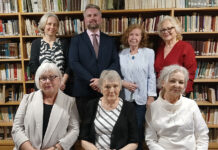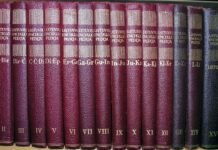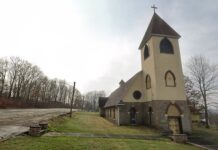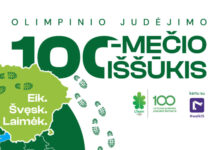
The eighth decade of the century brought a whirlwind of activity that swept the community into an era of unprecedented change. Newspaper stories reflected a busy Lithuanian cultural life, with speakers and song and dance ensembles visiting from other communities in North America, and even from Lithuania. The Lithuanian “Saturday“ school in Toronto, the largest Lithuanian community, had 180 students. Their essays and drawings were often published in the “TŽ“ as the newspaper was familiarly called. The youth section (Jaunimo Žiburiai) had student editors practicing their written Lithuanian and persuading their cohorts to follow suit.
Subscription prices jumped from $14 per year to $20 during this decade as the board of publishers saw printing and postal costs rising. Subscriptions and ads were never enough to cover staff salaries and publishing costs, but generous donations and bequests from community members had created a sizeable reserve. However, for the first time, in 1987 subscriptions began to fall.
Demonstrations protesting the Soviet occupation were a frequent feature in those years, petitions and letter-writing continued, and a Human Rights Committee established by the Community Board early in the decade began more concerted lobbying to champion the cause of imprisoned dissidents and freedom for the occupied countries. Editorials and articles encouraged optimism and action in the diaspora. By 1989, communication with the homeland had vastly improved, clearing the way for coverage of protests and declarations, and the famous“Baltic Way“ on August 23 – a mass pro-freedom demonstration when 2 million Lithuanians, Latvians and Estonians literally joined hands across their nations in a 600 kilometre human chain.
“New technology“ replaced the linotype by 1981. Typesetters were no longer needed, and the mass of metal that it consisted of could only be removed from the premises by opening the brick wall to the outside. The word processors purchased were still fairly primitive, as they did not have screens showing the text being entered. Articles were printed out on sturdy Kodak paper, cut into columns, waxed and attached to pre-printed broadsheet layout pages. Errors were cut out with Xacto blades, corrections reprinted, then meticulously cut and pasted in. Photos were processed as half-tones in an industrial camera.
At this time, Vytautas Balčiūnas, originally from Argentina, was the layout specialist, under the direction of Editor-in-Chief Rev. Dr. Gaida who would provide mock-ups every week. Two or three typists were required to transcribe text on the word processors. Editorial assistant Vytautas Kastytis Tvardauskas and two administrators made up the rest of the staff. Part-time helpers were the proof-reader, and several pensioners who would come in early on Tuesday mornings to prepare the newspaper for mailing. An “addressograph“ printed individual labels for each copy, and bundling by postal code was required by the Post Office. The postal service was a constant problem due to delivery delays that could never be explained or resolved. Complaints from readers showed that delivery took anywhere from two days to two weeks or more. Inquiries at local postal stations and up the management chain provided no results.

In 1988, poor health required Rev. Gaida to retire to the neighbouring rectory of Lithuanian Martyrs‘ parish, where he lived, but he was still able to direct the newpaper‘s content. He continued to edit copy and plan out each page for many years to come. Assistant editors were recruited to sit in the editor‘s office to take calls, receive visitors, edit short copy, attend events and bring news to the chief. The first was Jonas Andrulis, who was very active in the life of the Anapilis community centre, the Lithuanian Martyr‘s parish and had even been the principal of the Lithuanian “Saturday“ school. His selfless dedication to every project he joined, especially the newspaper, was prodigious. He received an Ontario Volunteer Service Award for his six decades of work in March, 2013.
1989-09-19-TEVISKES-ZIBURIAI-p1The Baltic Way (August 23, 1989) began at the Gediminas Castle in Vilnius and stretched all the way to Tallinn. Photo from the front page of the newspaper in September, 1989.



























